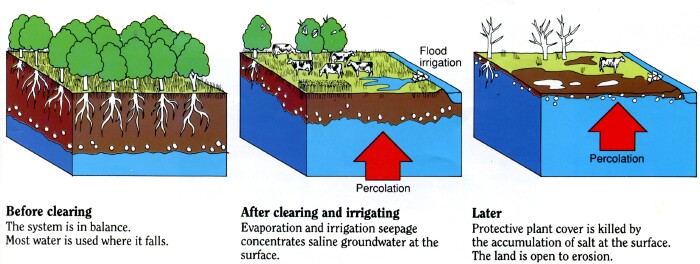Irrigation Salinity
Irrigation salinity occurs where saline groundwater tables rise, under the direct influence of irrigation, to a level which limits plant growth.
The major causes of irrigation salinity are: excess use of irrigation water; inefficient water use; poor drainage; irrigation of inappropriate soils; and, seepage from irrigation channels, drains and water storages. Any of these may lead to a rise in the watertable. If the ground water is inherently salty, or if there are salt stores in the soil below the root zone, saline water can invade the root zone and result in irrigation salinity.

Schematic diagram of changes to the distribution of salt in the landscape due to change in land-use (Department of Agriculture and Rural Affairs (1980) ‘Managing Salinity: Ensuring a Farming Future’. The State of Victoria).
Irrigation salinity therefore refers to an accumulation of salt in the plant root zone or on the soil surface, commonly as a result of saline groundwater rising within two metres of the ground surface. Salt sources are consistent with those that occur in the process of dryland salinity and include cyclic salts, salts derived from old marine incursions and salts released on weathering and breakdown of rocks in soil formation.


